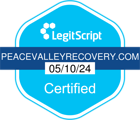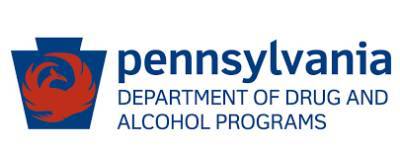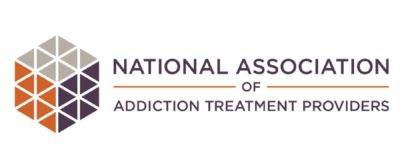The Opioid Crisis in Pennsylvania: Trends, Challenges, and Solutions
![]() | 4.9 Google Reviews
| 4.9 Google Reviews
![]() | 4.9 Google Reviews
| 4.9 Google Reviews
Peace Valley Recovery is located in Bucks County, Pennsylvania. Our mission is to provide patient-centered care that focuses on healing and recovery from addiction. This blog provides information, news, and uplifting content to help people in their recovery journey.
Authored by Chris Schumacher, | Medically Reviewed by Peace Valley Recovery Editorial Staff,
Last Updated: July 26, 2024
The phenomenon that’s impacted the lives of many citizens in the United States, known simply as the “opioid crisis,” has spread in a way our minds simply cannot comprehend. Whether it’s your neighbor, close friend, or family member, we’ve all heard stories of those that have been impacted either directly or indirectly by this plague. Opioids do not discriminate by class, socioeconomic background, or race, and unfortunately, it’s not something that’s going away any time soon.
In 2020 alone, a staggering 69,000 people lost their lives as a result of an opioid overdose – 82 percent were caused by synthetic opioids like fentanyl. In the past, drug overdose deaths occurred most frequently in a specific subset of society; it was quite rare to hear of deaths from those who just experimented here and there. However, today, with the rise of fentanyl, it’s become a daily occurence to hear of someone who tried pills once, overdosed, and died, or global icons like rapper Mac Miller, or Euphoria star Angus Cloud losing their lives.
This global phenomenon is something that’s also hitting close to home, with Pennsylvanian’s struggling to combat the rising use of opioids. Kensington, an infamous neighborhood in Philadelphia, similar to Los Angeles’ Skid Row, has received global notoriety for its widespread drug and fentanyl abuse. In 2022, government data found that fentanyl was present in 29 percent of rural overdose scenes, and 26 percent of urban overdose scenes. Statewide, there were a total of 4,703 overdoses, or 36.2 overdoses per 100,000 residents, a figure that continues to grow.
So, how did we get here? What are the challenges we’re facing? And what’s being done to solve this issue? Let’s delve into that below.
History of the Opioid Crisis
The opioid crisis in the United States began in the late 90s when pharmaceutical companies assured the medical community that prescription opioids were safe for treating chronic pain. They also promised a low rate of addiction, which led to a significant increase in the prescription of opioid medications. Doctors believed these claims as they were rooted in science, and began prescribing them at higher rates. This, in turn, led to widespread misuse of both prescription and non-prescription opioids.
As the crisis worsened, many individuals who had become addicted to prescription opioids turned to cheaper and more potent alternatives like heroin. It flooded the illicit drug market and exacerbated the situation. Later on in the crisis came fentanyl. Fentanyl, in particular, is extremely potent and often mixed with other drugs, leading to a dramatic rise in overdose deaths. The lack of regulation and the ease of manufacturing synthetic opioids made them a major driver of the epidemic, contributing to the overwhelming public health emergency that we see today.
Efforts to combat the opioid crisis have included increasing regulations on prescription opioids, enhancing access to addiction treatment services, and implementing harm reduction strategies such as the distribution of naloxone, a medication that can reverse opioid overdoses. While these measures have had some success, the opioid epidemic remains a complex and deeply rooted issue that requires comprehensive and sustained efforts to address.

Unfortunately, those with a legitimate need for opioids have been limited, despite not showing any signs of addiction. The crisis has affected all communities by and large, and we’ll delve into some of the challenges healthcare providers and the community are facing below.
Challenges Healthcare Providers and the Community are Facing
Healthcare providers and communities across Pennsylvania are enduring unique challenges stemming from the opioid crisis, which has strained resources and overwhelmed medical facilities. Hospitals and clinics are overwhelmed with patients suffering from opioid addiction and the results of overdoses that require constant and intensive care. Emergency rooms, in particular, have become frontline battlegrounds, where healthcare professionals face the task of reversing overdoses.
This crisis has caused significant grief in Pennsylvania’s communities. Families are torn apart as loved ones lose their lives because of this affliction, and the ripple effects are felt throughout the state. The economic impact is also concerning because the workforce is diminished by those who can no longer maintain employment due to their addiction. Schools and social services are also struggling to support children and families due to a lack of resources. The stigma surrounding addiction further complicates efforts to seek help because many individuals and families fear judgment by their peers.
Local governments and community organizations face seemingly insurmountable hurdles in addressing the opioid crisis. Funding for addiction treatment and recovery programs is often insufficient, and there is a significant shortage of mental health professionals and addiction specialists. The nature of opioid addiction requires a comprehensive response, which remains quite a challenge for healthcare providers and communities alike.
Pennsylvania’s Efforts to Combat the Opioid Crisis
Pennsylvania has implemented a variable approach to deal with the opioid crisis. Government officials understand the need for both immediate and long-term solutions, and the state has increased funding for addiction treatment programs to ensure that more residents have access to the care they need. This includes expanding Medicaid coverage for substance use disorder services and supporting the establishment of additional treatment centers. After years of stigma, the state has finally embraced the use of medication-assisted treatment (MAT), which combines medications with counseling and behavioral therapies.
Pennsylvania has also focused on harm reduction strategies to minimize the immediate dangers of opioid misuse. They’ve also widely distributed naloxone, a life-saving medication that can reverse opioid overdoses, to first responders, community organizations, and even to individuals at risk of overdose and their families. There is also a syringe exchange program to reduce the spread of infectious diseases among people who inject drugs and to connect them with treatment services. While some of these are controversial, it’s hard to dispute the positive results it yielded.
Education and prevention are also critical components of Pennsylvania’s strategy. The state has launched public awareness campaigns to educate citizens about the dangers of opioid misuse and the signs of addiction. Efforts are being made to train healthcare providers on safe prescribing practices and to implement prescription drug monitoring programs (PDMPs) to prevent doctor shopping and over-prescription.

Schools and community groups are also actively involved in preventive education, aiming to reduce the incidence of opioid misuse before it starts. By addressing the crisis from multiple angles, government officials are working to create a comprehensive response that saves lives and safeguards recovery.
Peace Valley Recovery’s Positive Contributions to the Crisis
Peace Valley Recovery is at the forefront of addressing the opioid crisis in Pennsylvania by offering a wide range of addiction treatment services. Our approach is tailored to those from diverse backgrounds and addiction situations. By providing these treatment solutions, we help you understand the entire addiction cycle, develop new coping skills, and identify triggers and root causes of your substance use. This holistic approach ensures that you can find their own path to healing and recovery and foster long-term wellness and sobriety.
With our facility, the primary focus is on more than just quitting drug or alcohol use. We partner with patients on their recovery journey to offer support and guidance in a peaceful environment that promotes a loving and safe atmosphere. This nurturing setting is vital for someone who is navigating this incredibly challenging period. By combining professional expertise with a compassionate approach, we stand as a knowledgeable and active participant in the fight against the opioid crisis to make a meaningful difference in the lives of those affected by addiction.
If you’re struggling with opioid addiction, don’t become another statistic in the opioid crisis. We’re here to help. Give us a call at 267-263-7084, or contact us online to get the treatment you deserve and get on the path toward a better life.
You May Also Like to Read
The Opioid Crisis in Pennsylvania
The Opioid Crisis in Pennsylvania: Trends, Challenges, and Solutions Authored by Chris Schumacher, | Medically Reviewed by [...]
10 Famous Celebrity Heroin Addiction
10 Celebrities Who Overcame Heroin Addiction Celebrity or famous heroin addicts go through the same [...]
How Drug Addiction Affects the Entire Family
How Drug Addiction Affects the Entire Family Addiction affects the family. It’s easy to think of [...]








